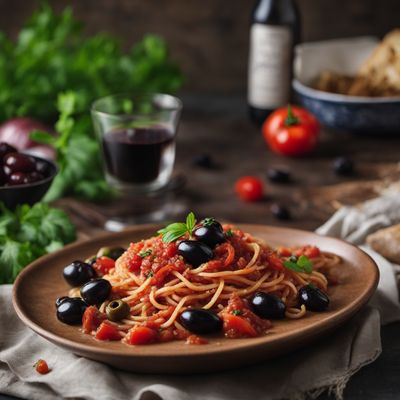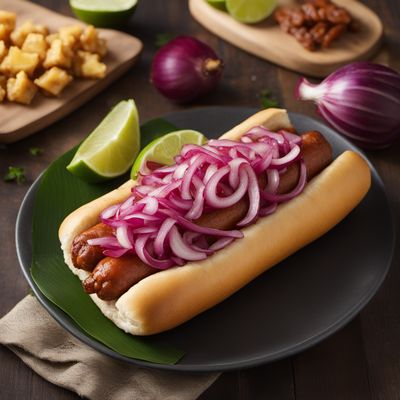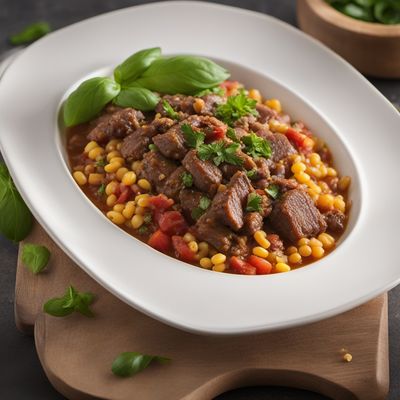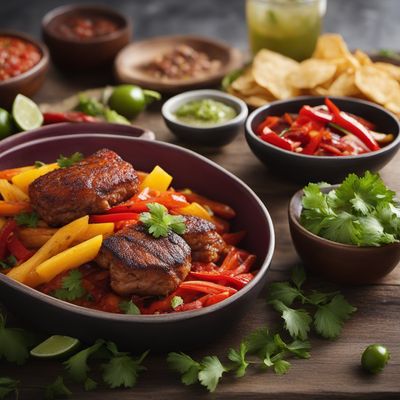
Ingredient
Cooked bratwurst-type sausage
Savory Delight: Exploring the World of Cooked Bratwurst-Type Sausage
Cooked bratwurst-type sausage is a type of sausage that is typically made from a mixture of ground pork, beef, or veal, seasoned with a blend of herbs and spices. It has a firm and juicy texture with a slightly coarse consistency. The sausage is usually cooked by grilling, pan-frying, or boiling, resulting in a crispy and flavorful exterior while maintaining a moist and tender interior. It has a rich and robust flavor profile, with hints of garlic, onion, and various spices.
Origins and history
Bratwurst, a type of German sausage, has a long history dating back to the 14th century. It originated in the region of Franconia, Germany, and quickly gained popularity throughout the country. The name "bratwurst" is derived from the Old High German words "brät" meaning finely chopped meat and "wurst" meaning sausage. Over time, bratwurst became a staple in German cuisine and eventually spread to other parts of Europe and the world.
Nutritional information
Cooked bratwurst-type sausage is a good source of protein, providing approximately 15 grams per serving. It also contains essential vitamins and minerals such as vitamin B12, iron, and zinc. However, it is important to note that it is relatively high in fat and calories, so moderation is key.
Allergens
Cooked bratwurst-type sausage may contain allergens such as wheat, soy, or milk, depending on the specific recipe or brand. It is important to check the ingredient list or consult with the manufacturer if you have any allergies or dietary restrictions.
How to select
When selecting cooked bratwurst-type sausage, look for sausages that have a firm texture and are free from any signs of spoilage, such as discoloration or an off-putting odor. Opt for sausages that are made with high-quality ingredients and have a good balance of fat and meat. Freshness is key, so choose sausages with a recent production date or expiration date.
Storage recommendations
To maintain the freshness and quality of cooked bratwurst-type sausage, it should be stored in the refrigerator at a temperature below 40°F (4°C). It is best to keep the sausages in their original packaging or transfer them to an airtight container or resealable bag. Properly stored, cooked bratwurst-type sausage can last for up to 5 days in the refrigerator.
How to produce
Producing cooked bratwurst-type sausage at home requires specialized equipment and knowledge of sausage-making techniques. It is recommended to leave the production to professional butchers or purchase pre-cooked sausages from reputable sources.
Preparation tips
Cooked bratwurst-type sausage can be enjoyed in various ways. It can be grilled to perfection, pan-fried for a crispy exterior, or simmered in flavorful stews and soups. When grilling or pan-frying, it is recommended to prick the sausages with a fork to prevent them from bursting. Serve the sausage on a bun with your favorite toppings and condiments for a classic bratwurst sandwich. Alternatively, slice the sausage and incorporate it into pasta dishes, casseroles, or stir-fries for an added burst of flavor.
Culinary uses
Cooked bratwurst-type sausage is commonly used in various dishes and cuisines. It is a staple in German cuisine, where it is often served with sauerkraut and mustard. It can also be enjoyed in sandwiches, hot dogs, or as a topping for pizzas. The sausage adds depth of flavor to stews, soups, and pasta dishes. Its versatility allows it to be incorporated into a wide range of recipes, making it a favorite among home cooks and professional chefs alike.
Availability
Cooked bratwurst-type sausage is commonly available in regions with a strong German culinary influence, such as Germany, Austria, and parts of the United States. It can also be found in specialty grocery stores or international food markets.
More ingredients from this category
Recipes using Cooked bratwurst-type sausage » Browse all

New Nordic Drei im Weggla
Nordic Delight: Open-Faced Sausage Sandwiches

Bavarian-style Puttanesca with a Twist
Bavarian Delight: A Unique Twist on Puttanesca

Carolina-Style Hot Dog with Tangy Slaw
Southern Delight: Tangy Carolina-Style Hot Dog

Montréal Hot Dog with a Twist
Savory Fusion: A Modern Twist on Montréal Hot Dog

Classic Coney Dog Recipe
Savory Delight: The Ultimate Classic Coney Dog

Bavarian Spring Rolls
Bavarian Twist on Classic Chinese Spring Rolls

Puka Dog with Tropical Relish
Island Delight: Puka Dog with a Taste of Paradise

Occhi di Santa Lucia - Omaha Style
Savory Stuffed Beef Rolls - A Taste of Omaha

Homemade Gourmet Hot Dog
Savory Stadium Delight: Gourmet Hot Dog with a Twist

Chilean-Style Hot Dog with Avocado and Pebre Sauce
Santiago Sensation: Chilean-Style Hot Dog with Zesty Avocado and Pebre Sauce

German Sausage Trio in a Bun
Sausage Symphony: A German Delight in Every Bite

IONA-inspired Pancho
Island Delight: IONA-inspired Pancho